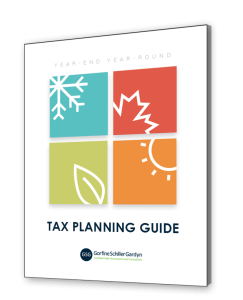The President signed the Families First Coronavirus Response Act (the Act) into law on March 18, 2020 to provide paid sick leave and expanded family and medical leave to employees affected by COVID-19. The Act applies to employers with fewer than 500 employees and provides tax credits to help defray the cost of providing these benefits. The provisions of the Act are in effect from April 1, 2020 through December 31, 2020.
Under the Act, employers are required to pay sick leave to an employee if they are unable to work or telework for the following reasons:
- 1. The employee is subject to a Federal, State, or local quarantine or isolation order related to COVID-19.
- 2. The employee has been advised by a health care provider to self-quarantine related to COVID-19.
- 3. The employee is experiencing COVID-19 symptoms and is seeking a medical diagnosis.
- 4. The employee is caring for an individual subject to an order described in (1) or self-quarantine as described in (2).
- 5. The employee is caring for a child whose school or place of care is closed (or child care provider is unavailable) for reasons related to COVID-19.
- 6. The employee is experiencing any other substantially-similar condition specified by the Secretary of Health and Human Services, in consultation with the Secretaries of Labor and Treasury.
For all of the reasons listed above, a full-time employee is eligible for up to 80 hours of leave. A part-time employee is eligible for up to the number of hours of leave the employee works on average over a two-week period.
The expanded family and medical leave provision of the Act only applies to leave reason (5) above. In addition to the paid sick leave, the employee is eligible for up to an additional 10 weeks of paid expanded family and medical leave at 40 hours per week. A part-time employee is eligible for leave for the number of hours the employee is normally scheduled to work over that period.
For part-time employees who have irregular schedules, the employer may use a six-month average to calculate the average daily hours for both types of leave.
For leave reasons (1) through (3), the employee should be paid at their regular rate of pay up to $511 per day and $5,110 in the aggregate. For leave reasons (4) and (6), the employee should be paid at two-thirds of their regular rate of pay up to $200 per day and $2,000 in the aggregate. For leave reason (5), the employee should be paid at two-thirds of their regular rate of pay up to $200 per day and $12,000 in the aggregate ($2,000 under the paid sick leave and $10,000 under the expanded family medical leave).
The employer will receive a tax credit equal to the amount paid to the employee under both types of leave plus a prorated health insurance amount. In addition, the employer is not required to pay their 6.2% of Social Security tax on the leave paid. The employer does need to pay in their 1.45% of the Medicare tax on the leave paid, but will receive a credit for it. The employer may reduce their usual tax deposits by any amounts for which they expect to receive a credit.
The tax credits are also available to self-employed individuals and are calculated based on their self-employment earnings. The credit will be taken on their Form 1040. In order to take advantage of the increased cash flow like employers, the self-employed individual can reduce their estimated tax payments by the estimated tax credit.
There is a small business exemption for businesses with fewer than 50 employees. This exemption would only apply to leave reason (5) and applies if it would cause the business undue hardship.
For more information, please visit the Department of Labor’s website or the IRS’s website, and as always, contact us with any questions.
Categories: Tax, Small Business, COVID-19 Resources




